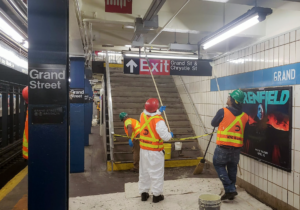Wave of the future in Chicago: mass transit
Written by adminThe future ain't what it used to be. Back in 1930, the movie "Just Imagine" dreamed of the world of 1980, when everyone has a flying car. Other sci-fi scenarios pictured personal jet packs and individual transit "pods" gliding along monorails, according to the Chicago Sun-Times.
Now, the transportation
future is starting to look like a more fuel-efficient version of the past. With
the threat of global warming and the world’s oil supplies dwindling, local
planning and transportation experts imagine a Chicago area in 2040 with more
public transit; higher-density housing; smaller, lighter airplanes; electric
cars, and more options for walking and biking.
Whatever transit looks
like, it will have to serve a larger chunk of the population than it does now,
according to Randy Blankenhorn, executive director of the Chicago Metropolitan
Agency for Planning, which is developing a regional plan for 2040.
"We’re projecting
we’re going to add 2.8 million people to this region by 2040 — we’re not going
to build enough highways to add 2.8 million people," said Blankenhorn.
"We have to make public transit a real option for people."
"Density" used to
be a dirty word. The idea of having a place in the country, instead of stacked
in an apartment building, is for many still a big part of the American dream.
Chicago area urban planners
imagine future communities with more people, cultural attractions, and
businesses clustered around train stations. Some of this is already happening,
in suburbs like Naperville and Arlington Heights, and others, which have condos
and shops in thriving downtowns near Metra stations. Chicago has put together
guidelines for denser future development around CTA stops.
"We can begin living
more vertically and efficiently," said Lee Bey, executive director of the
Chicago Central Area Committee.
One problem with the
current transit system is it needs fixing, badly. The CTA alone says it needs
$7 billion to repair structures and replace aging equipment. Another problem
for Chicago area transit is the lack of connection among suburbs.
Providing the money and
political will are there to get old lines fixed and new lines built, the next
10 to 30 years could see the expansion of the CTA Red Line to 130th Street, the
Orange Line to Ford City Mall, a "Circle Line" connecting Metra and
CTA stops, and a Blue Line extension to Lombard.
On Metra, a north-south
"Star Line" could connect Joliet all the way to Hoffman Estates.
Other possibilities are Metra extensions north to Wisconsin, or southeast to
Crete. Transit officials also hope riders will be able to transfer from Metra
to CTA to Pace on a universal fare card.
A focus of federal
investment is high-speed rail. A 220-mph train could take a traveler from
Chicago to Springfield in less than an hour, according to Brian Imus, head of
the Illinois Public Interest Research Group. "Rail is the wave of the
future," Imus said.
Less-dramatic but still
crucial improvements can come from "bus rapid transit" — the concept
of sending buses down highway car-pool lanes or shoulders, or down bus lanes of
main arteries like Halsted or 79th Street. RTA executive director Stephen
Schlickman noted that BRT is more affordable than laying down new rail lines,
and a good way to test the market for rail extensions.
The 1950s saw massive
federal investment in highways. But local urban planners see few or no future
highways for the region, but more efficient use of existing roads. One solution
is coordinating the timing of stoplights through the area’s 270 suburbs, said
Frank Beal, executive director of the civic group Chicago Metropolis 2020.
"If you coordinate stop lights the way the city of Chicago does, you can
get 15 percent more traffic through," he said.
Another possibility is
managing tolls more to control traffic than raise revenues, Beal said.
High-occupancy vehicle lanes could give preference to car pools and buses,
while making single-occupant vehicles pay higher tolls to drive in the fast
lane. The Tollway is already hoping to get funding for HOV lanes on I-294.
Pedestrians and bicyclists
could have more safe choices, according to Rob Sadowsky, head of the Active
Transportation Alliance. One option is closing a downtown street — like Monroe
— to vehicle traffic and redesigning it for bikes and pedestrians, with
perhaps light rail in the middle.
"We really stand at a
fork in the road. … We’re going to get tired of being stalled on expressways,
tired of spending a portion of our paychecks on a two-car existence," Bey
said. "We’re going to compel our legislators to fund mass transit in
substantial ways."





